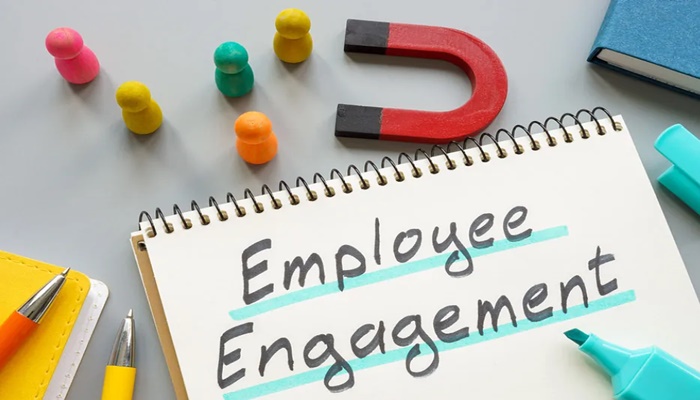Prevention isn’t merely a safeguarding for the employee—but come on, it’s a safeguarding for the company, too.
Workplace bullying is not an HR ceremony or a personal conflict. It’s a poisonous behavior that erodes employee well-being, destroys team chemistry, and can ultimately put an entire organization in legal and financial jeopardy. It may manifest in the form of persistent verbal abuse, ostracism, humiliation, or intimidation, but workplace bullying touches both the target and the organization.
What employers are unaware of is that bullying might exceed emotional harm—it could have serious legal consequences. And with the new work culture of today, whereby workers are better educated and willing to speak out for their rights, preventive measures are more crucial than ever before.
Actual Risks: When Bullying Is a Legal Liability
Unchecked bullying not only makes individuals unhappy; it can prove expensive legal hell. Employees who are frequently bullied in the workplace typically feel anxious, stressed, depressed, and even sick. Some might end up going to court if internal grievance redressal is unsatisfactory.
From constructive dismissal or discrimination claims to emotional distress, the danger is always there. Courts in the majority of nations are beginning to regard bullying at work as a violation of an employer’s duty to ensure a healthy and safe working environment. If an employer does nothing or fails to address complaints, it is possible to make them liable for damages incurred.
This legal hazard is one of the most compelling arguments for why organizations need to have systems in place—not only to deal with bullying, but so that it doesn’t occur at all.
Seeing the Red Flags Early
Early detection is crucial. Bullying is covert and escapes detection until the damage cannot be reversed. Managers and colleagues have to be on guard for:
- A sudden decline in an employee’s performance
- Avoiding team activities
- Increased absenteeism
- Changes in behavior such as withdrawal, irritability, or noticeable stress
Open communication among employees and management assists in identifying issues early. If employees feel comfortable discussing issues, subtle indicators of bullying can be recognized and fixed before they become issues.
Establishing a Proactive Culture Against Bullying
The best way to stop bullying is to create an environment where it’s just not tolerated. It’s done through building a culture of respect, fairness, and belonging. From the first day onboarding process through continuous training, employees have to be definite about what is acceptable behavior—and what will be the consequence of those who violate that.
Leaders need to model themselves after someone, showing through example how to act towards other people in a respectful way. Open communication, team-building exercises, and reward and recognition programs help bring a sense of community and trust among employees.
Legal Framework: What the Law Demands
Other nations and territories have their own labor legislation regulating harassment, discrimination, and hostile work environment. But even in cases where no particular anti-bullying laws exist, employers are typically bound by the general duty of care to provide a respectful and safe working environment.
Legal requirements typically encompass:
- A clear anti-bullying policy
- Procedures for complaints are well-written
- Investigation guidelines
- Penalties
Being up to date with employment law prevents your business from being caught off guard. A legally compliant anti-bullying policy not only protects employees—most importantly, it protects the employer against potential future complaints.
Reporting Mechanisms That Actually Work
One of the largest contributing factors to bullying in workplaces is the absence of proper reporting systems. Too many employees are afraid of retaliation, or they simply don’t have confidence that their complaints will be heard. This is why organizations must have safe, easy, and confidential avenues for reporting bullying.
Possible solutions include:
- Anonymous reporting mechanisms
- Specific HR officers
- Third-party websites or helplines
It takes more than just gathering complaints. There has to be evidence that complaints are addressed promptly, equitably, and consistently. Workers must be able to see that the system is effective and that offenders are punished.
Doing Investigations on Complaints Correctly
After a complaint is lodged, how it is treated is every bit as important as whether it was received. Investigations ought to be:
- Confidential
- Objective
- Thorough
- Timely
Employers need to have a definite procedure—collect evidence, speak to both parties concerned, and deliberate the issue thoroughly. One should not take sides prematurely. A fair hearing must be given to every individual.
After concluding, appropriate action can range from mediation to dismissal. Whatever it is, though, the process needs to be well-documented to prevent conflicts or future legal hassles.
Legal Assistance & Conflict Resolution
For the more serious incidents—or where high-level staff are behind the bullying—the best option is to bring in attorneys. A seasoned employment lawyer can help HR make difficult decisions and keep the firm out of trouble with the law.
Besides giving legal counsel, professional conflict resolution also defuses tension in the majority of cases. Mediation, if well conducted, provides a middle ground where both sides can openly discuss and resolve the matter amicably without seeking the intervention of courts.
Emotional counseling might also be given to victims. Employers would include mental health advice or employee assistance programs as an empowerment tool for employees to manage the situation and regain confidence.
Continuous Improvement and Policy Reviews
Even the best systems must be revised from time to time. Dynamics at the workplace change, and legislation does as well. Based on that, review anti-bullying policies at least annually. Leverage employee feedback, feedback from previous cases, and proof of legislative changes to tune your plan.
Think about:
- Are employees aware of the policies?
- Is the reporting process effective?
- Have complaints or incidents reduced?
Ongoing improvement not only makes your workplace better—it demonstrates to employees that you value their dignity and safety.
Conclusion: Prevention is Protection
The secondary consequences of bullying in the workplace ripple far beyond the bullies themselves. It reaches team morale, company culture, productivity, and even legal standing. The best news about bullying is that it can be prevented.
With the proper policies in place—early intervention, sound policies, open communication, and knowledge of the law—companies can create a respectful, safe work environment for all. Prevention is more than a check box; it’s an investment in the long-term health and well-being of staff and success in the business.
It is safe to say that when workplace bullying is involved, one thing is always the case: nothing ever is the solution. Prevention isn’t merely a safeguarding for the employee—but come on, it’s a safeguarding for the company, too.
Source – https://www.legalreader.com/from-workplace-bullying-to-legal-action-prevention-strategies-that-work/




















